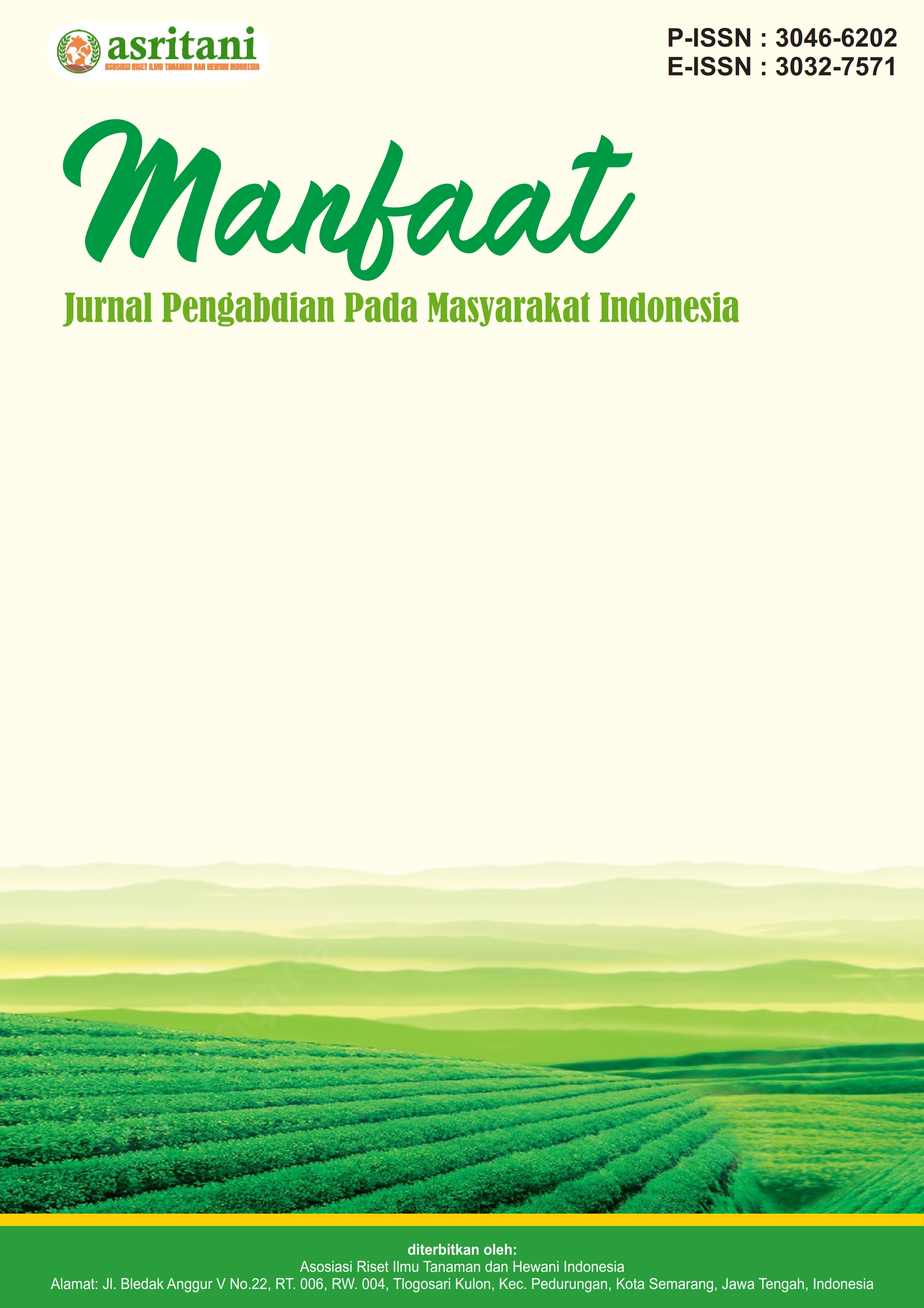Memanfaatkan Potensi Enceng Gondok sebagai Bahan Baku Pupuk Kompos untuk Meningkatkan Ekonomi Masyarakat Villa Mutiara Serpong, Kota Tangerang Selatan
DOI:
https://doi.org/10.62951/manfaat.v2i2.339Keywords:
Community Economy, Compost Fertilizer, Water Hyacinth PotentialAbstract
Mutiara Serpong Villa Complex, located in Pondok Jagung Timur Village, South Tangerang, is surrounded by the BSD City area. This area faces environmental problems due to the uncontrolled growth of water hyacinth (Eichornia Crassipes) in the surrounding lakes and swamps, causing irrigation disruption and decreasing water quality. Water hyacinth is known as a weed that damages the aquatic environment, but it also has positive potential as a raw material for organic fertilizer. This program aims to overcome the problem of the spread of water hyacinth by utilizing the plant into organic compost. Water hyacinth compost contains high nutrients, helps improve soil properties, and improves the quality and quantity of plants. This initiative is expected to provide environmental benefits while increasing the income of the surrounding community through the use of water hyacinth as organic fertilizer. Community Service Activities at the Mutiara Serpong Villa Complex use several methods that aim to provide understanding and skills about making compost from water hyacinth to the local community. There are five main stages: Socialization, Counseling, Training and Practice, Observation and Evaluation, Sustainability. This method is designed to increase active community participation and the sustainability of water hyacinth compost use as a beneficial environmental solution.
References
A, Sriyanto, dkk. (2025). Membangun kemandirian ekonomi masyarakat dengan bank sampah. Panggung Kebaikan: Jurnal Pengabdian Sosial, 2(1). https://pkm.lpkd.or.id/index.php/PanggungKebaikan/article/view/1106
Akhtar, F., & Soetjipto, E. (2014). Pengelolaan sampah rumah tangga untuk daur ulang dan produk bernilai ekonomis. Jurnal Teknologi Lingkungan, 10(1), 45–53.
Hajama, N. (2014). Pemanfaatan enceng gondok sebagai bahan baku pupuk organik kompos. Jurnal Pertanian Berkelanjutan, 12(2), 45–52.
Murbandono. (2000). Manfaat bahan organik bagi tanaman. Puslit Biologi, LIPI.
Prihatiningtyas, S. E. (2020). Pro sejahtera: Pemanfaatan eceng gondok (Eichornia crassipes) untuk mengurangi pencemaran air dan meningkatkan ekonomi masyarakat Desa Tungkaran. In Prosiding Seminar Nasional Pengabdian kepada Masyarakat (Vol. 2, pp. 114–120).
Wahyono, S., Sahwan, F. L., & Suryanto, F. (2003). Menyulap sampah menjadi kompos. Pusat Pengkajian dan Penerapan Teknologi Lingkungan, BPPT.
Downloads
Published
How to Cite
Issue
Section
License
Copyright (c) 2025 Manfaat : Jurnal Pengabdian Pada Masyarakat Indonesia

This work is licensed under a Creative Commons Attribution-ShareAlike 4.0 International License.





